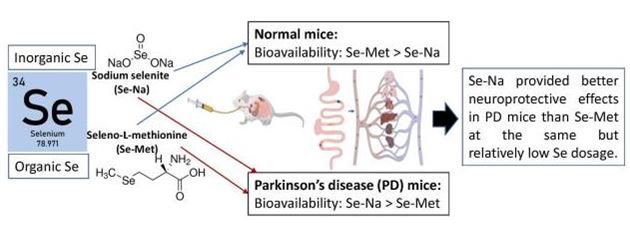Dr DONG Xiaoli, Core Member of the Research Institute for Future Food, and her teammates conducted animal research which unveils the importance of forms and dosages of selenium (Se) in preventing and treating Parkinson’s disease (PD).
Using mouse models, the team studied the biological effects of different forms and dosages of Se. Various dosages of inorganic sodium selenite (Se-Na) or organic seleno-L-methionine (Se-Met) were administered to an acute or chronic PD mouse model, and their neuroprotective effects and mechanisms were investigated. At low dosage, Se-Na outperformed Se-Met, and the enhanced GPX activities induced by Se-Na can probably explain the observed protection against dopaminergic neuronal loss in this study. However, at high dosage, Se-Na treatmentled to the deaths of most of the animals due to its high toxicity; and high dosage of Se-Met with relatively lower toxicity still failed to provide neuroprotection against PD.
It is known that the bioavailability of Se-Met is higher than that of Se-Na under normal conditions, but the study found that in the mouse model, the bioavailability of Se-Na is higher than that of Se-Met. Thus, the PD mouse model has a totally different Se bio-distribution in response to Se-Na or Se-Met. This difference explains why Se-Na can have better neuroprotective effects than Se-Met in the PD mouse model.
These observations proved that the forms and dosages of Se affect its biological actions in mouse models of PD, and provided valuable scientific evidence to researchers and medical professionals as they explore further the application of Se in PD prevention or treatment.






